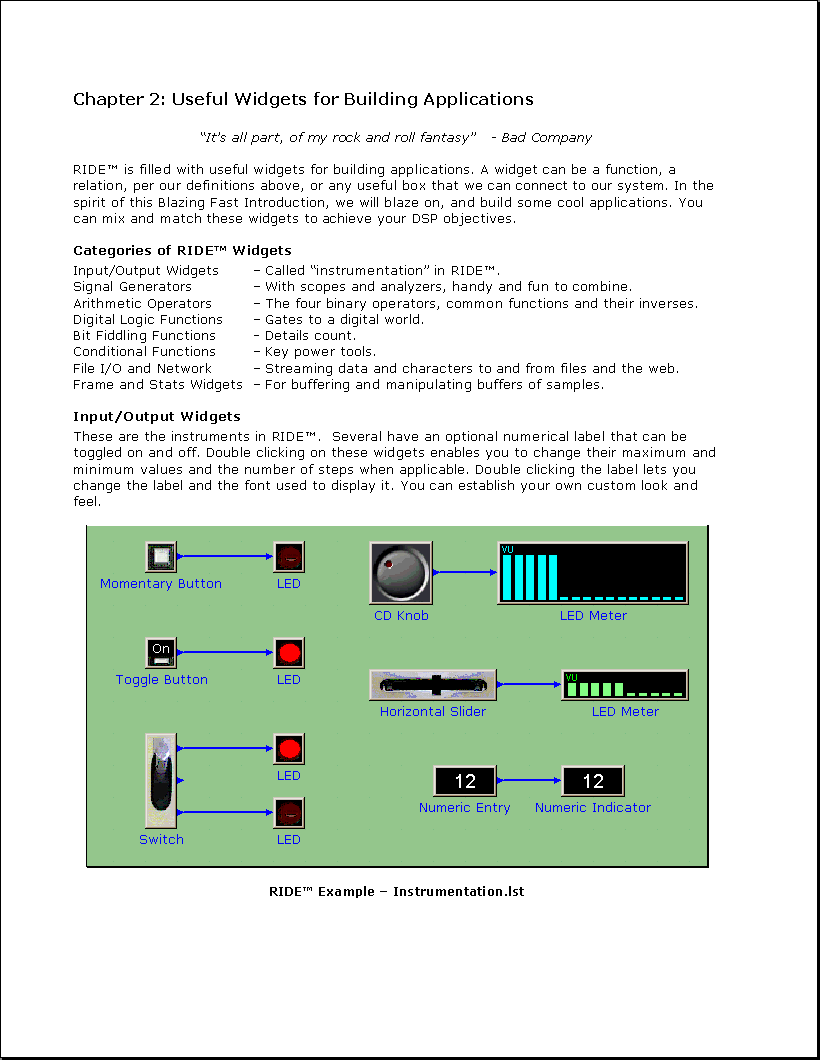
Chapter 2: Useful Widgets for Building Applications
" It's all part, of my rock and roll fantasy" - Bad Company
RIDE(tm) is filled with useful widgets for building applications. A widget can be a function, a
relation, per our definitions above, or any useful box that we can connect to our system. In the
spirit of this Blazing Fast Introduction, we will blaze on, and build some cool applications. You
can mix and match these widgets to achieve your DSP objectives.
Categories of RIDE(tm) Widgets
Input/Output Widgets - Called "instrumentation" in RIDE(tm).
Signal Generators - With scopes and analyzers, handy and fun to combine.
Arithmetic Operators - The four binary operators, common functions and their inverses.
Digital Logic Functions - Gates to a digital world.
Bit Fiddling Functions - Details count.
Conditional Functions - Key power tools.
File I/O and Network - Streaming data and characters to and from files and the web.
Frame and Stats Widgets - For buffering and manipulating buffers of samples.
Input/Output Widgets
These are the instruments in RIDE(tm). Several have an optional numerical label that can be
toggled on and off. Double clicking on these widgets enables you to change their maximum and
minimum values and the number of steps when applicable. Double clicking the label lets you
change the label and the font used to display it. You can establish your own custom look and
feel.
RIDE(tm) Example - Instrumentation.lst